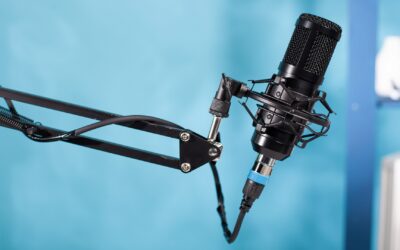“The 6 Big Losses”: How to Produce More with Less
The Background
Manufacturing companies around the US all have a similar goal, produce more with less. Whether working with iron ore in the first industrial revolution or collaborative robots in the third industrial revolution, manufacturers have always strived to convert raw supplies to the desired end-product in the most efficient manner possible. In recent years, and specifically in the fourth industrial revolution, this goal has resulted in manufacturers leveraging their own data from the shop floor to squeak out the last few percentages of efficiency. While this data and resulting analytics can create efficiency in many ways, one of the simplest frameworks for doing so is in context of the “The Six Big Losses”. To understand this process, let’s look at a given use case.
What are the Six Big Losses?
Let’s say you own a mid-sized injection molding factory. As we have already discussed, you are constantly on the lookout for ways to improve efficiency and produce more parts with less. One way to do so is to minimize lost manufacturing time and maximize production time. This is where the Six Big Losses come into play.
As the owner of the factory, we recognize that we will lose some part of the calendar year to planned stops. This can be anything from a winter holiday to an annual shut down day. After we account for this unavoidable stoppage, we are left with what is called planned production time. From here, we need to recognize that some time will be lost to overall availability. This translates to equipment failure and setup times.
After we account for our availability losses, we need to think about speed. Ideally our injection molding machine would run at 100% of the spec’d cycle time but as we all know, this is not always the case. Idle and short stops caused by things like machine jams or poor lubrication all result in slower than desired cycle times.
And finally we need to think about scrap rates. The injection molding machine will undoubtedly produce subquality parts even if it is 100% speed for the maximum amount of planned production time. Therefore, we will have quality losses that can be allocated to time lost in production.
As the owner of the factory, production time is where we make money. Therefore, we need to find ways to maximize the production time, or inverse, minimize the availability losses, speed losses, and quality losses. This is where data from the factory floor comes into play.
How Does Data Help Combat These Losses?
To start minimizing these losses, we need to understand exactly what causes them. Therefore,our first step is to watch and listen. Much like a doctor trying to diagnose a patient, we need to investigate and study our shop floor at the root level. While we can have employees walk the floor and monitor various parts of the injection molding machines, this usually takes too long to provide actionable insight. By collecting this data with various sensors, edge devices, and data tags, we can see in real time how these losses are beginning. Therefore, we can act to reduce these losses from the source.
Where Does IoT Come into Play?
There are many key benefits to implementing IoT to solve the 6 big losses. One of the biggest benefits is the real-time high-speed collection of in-context manufacturing and operations data. IoT transforms this data into manufacturing and process in-context information, which saves companies time and money because they will no longer have to rely on manual data entry by employees. This new technology does the work itself, integrating manufacturing Enterprise Resource Planning (ERP) data with production machine generated data to make meaningful information that can be used to reduce the six big losses in real time. Other benefits of IoT include instantaneous visibility to accurate and truthful manufacturing data, increased ability for quick decisions to avoid costly errors, reduced manual data collection efforts and errors, and increased alignment of cause and effects relationships.
What’s the Real Benefit?
There are many key benefits to implementing Industrial IoT (IIoT) to solve the 6 big losses. One of the biggest benefits is the real-time high-speed collection of in-context manufacturing and operations data. IIoT solutions such as Prophecy IoT® transform this data into manufacturing and process in-context information, which saves companies time and money because they will no longer have to rely on manual data entry by employees. This new technology does the work itself, integrating manufacturing Enterprise Resource Planning (ERP) data with production machine generated data to enable predictive analytics that can be used to reduce the six big losses in real time. Other benefits of a comprehensive IIoT solution include instantaneous visibility to accurate and truthful manufacturing data, increased ability for quick decisions to avoid costly errors, reduced manual data collection efforts and errors, and increased alignment of cause and effects relationships. Getting started can be quick and painless with the right implementation partner, realizing benefits in weeks – not months or years.
Author: Ben Graham
Biography: Ben Graham is an Account Executive on the Prophecy IoT team. Prior to Prophecy IoT®, Ben has worked in the advanced manufacturing industry including roles as an Electromechanical Automation Engineer at a motion control distributor in Boston and as a Sales Application Engineer at an additive manufacturing software startup in New York City. While working in Boston, he was responsible for supporting customers with motion control and IoT hardware devices. Before beginning his career, he graduated from Boston University with a degree in Mechanical Engineering in 2016. For more information, Ben Graham can be reached at 586-464-4400 or by visiting www.prophecyiot.com/contact-us/
Ben Graham is an Account Executive on theProphecy IoT team. Prior to Prophecy IoT®, Ben has worked in the advancedmanufacturing industry including roles as an Electromechanical AutomationEngineer at a motion control distributor in Boston and as a Sales ApplicationEngineer at an additive manufacturing software startup in New York City. Whileworking in Boston, he was responsible for supporting customers with motioncontrol and IoT hardware devices. Before beginning his career, he graduatedfrom Boston University with a degree in Mechanical Engineering in 2016. Formore information, Ben Graham can be reached at 586-464-4400 or by visiting www.prophecyiot.com/contact-us/




